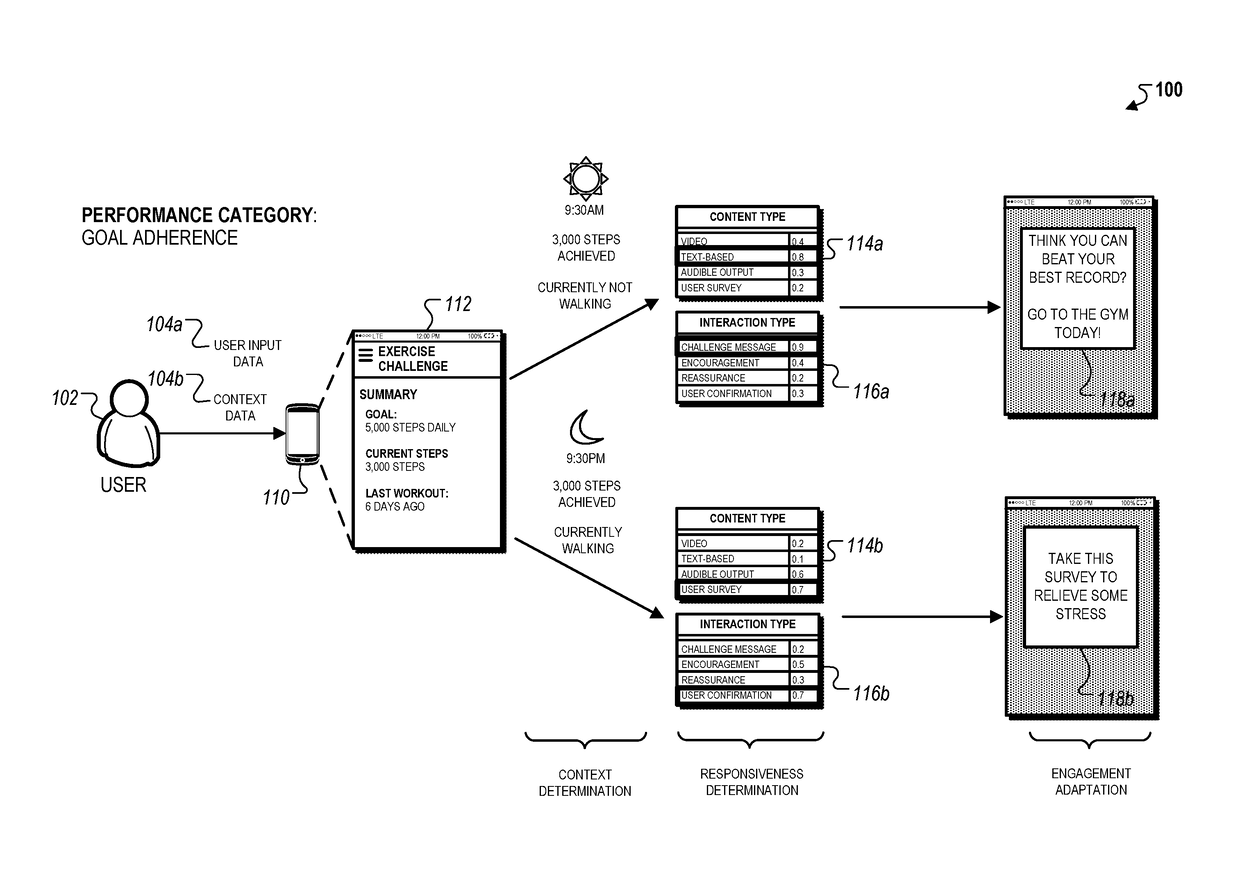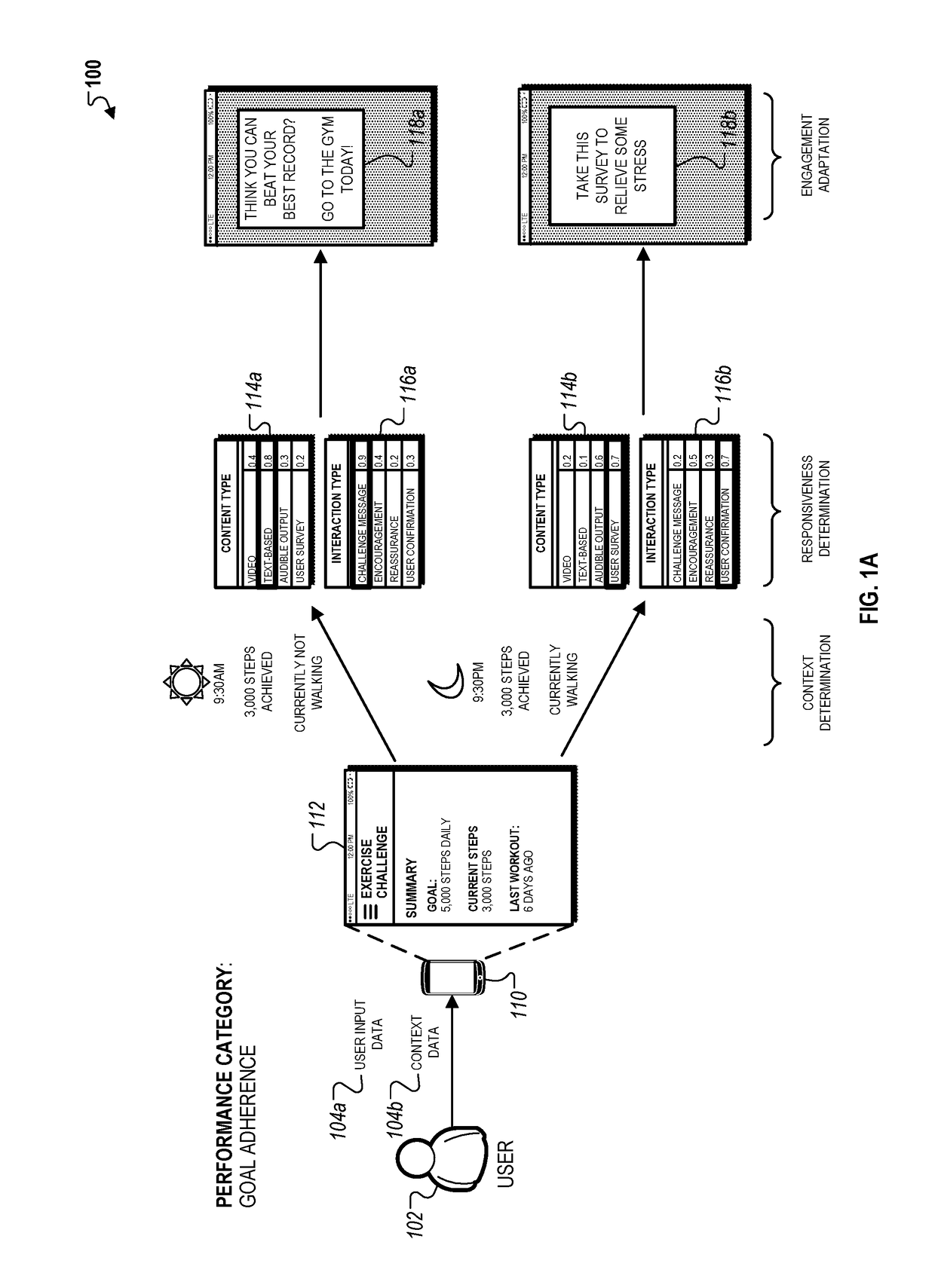Data-driven adaptation of communications in user-facing applications
a technology of user-facing applications and data, applied in the direction of transmission, electrical equipment, etc., can solve the problems of inability to maintain consistent and meaningful interaction between applications and users, and failure to use applications can be detrimental to users, so as to avoid unnecessary interactions, save processing cycles, and network bandwidth
- Summary
- Abstract
- Description
- Claims
- Application Information
AI Technical Summary
Benefits of technology
Problems solved by technology
Method used
Image
Examples
Embodiment Construction
[0020]In general, a system is capable of improving user engagement with an application by individually personalizing the communication between the application and each user. For example, the application, and an associated server system, can implicitly learn a user's preferences for engagement through user responses periodically sent to the user on the application. Additionally, the system can determine which types of communications and timing are most effective in supporting the user in achieving appropriate performance targets.
[0021]As described throughout, “user engagement” refers generally to user's activity on the application. In some instances, “user engagement” refers to the input received on the application that is related to user activity on the application (e.g., user input provided on an application interface, or sensor data associated with user activity). In other instances, “user engagement” refers to the user's performance on a program that is provided on the applicatio...
PUM
 Login to View More
Login to View More Abstract
Description
Claims
Application Information
 Login to View More
Login to View More - R&D
- Intellectual Property
- Life Sciences
- Materials
- Tech Scout
- Unparalleled Data Quality
- Higher Quality Content
- 60% Fewer Hallucinations
Browse by: Latest US Patents, China's latest patents, Technical Efficacy Thesaurus, Application Domain, Technology Topic, Popular Technical Reports.
© 2025 PatSnap. All rights reserved.Legal|Privacy policy|Modern Slavery Act Transparency Statement|Sitemap|About US| Contact US: help@patsnap.com



